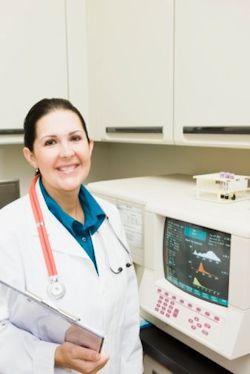Laboratory Safety
Introduction
The bloodborne pathogens standard has two classifications for laboratories: (1) a clinical laboratory is a workplace where diagnostic or other screening procedures are performed on blood or other potentially infectious materials, and (2) a research laboratory is a laboratory producing or using research-laboratory-scale amounts of HIV or HBV.

Laboratory Types
"Clinical ( or diagnostic) laboratories" are hospital labs, free-standing clinical or diagnostic labs, labs in dental or medical offices, blood and plasma center labs, dental labs, and laboratories preparing reagents from human blood or blood components. Laboratories that conduct research using blood or blood components but do not produce or use concentrated amounts of HIV or HBV, would also be considered a clinical (or diagnostic) laboratory.
"Research laboratories" means a laboratory producing or using research-laboratory scale amounts. Research laboratories may produce high concentrations of HIV or HBV but not in the volume found in the production facilities. Production facilities may produce high volumes of HIV or HBV, but not high concentrations of the viruses.
Knowledge Check Choose the best answer for the question.
10-1. Diagnostic or screening procedures are performed on blood at _____.
You forgot to answer the question!
